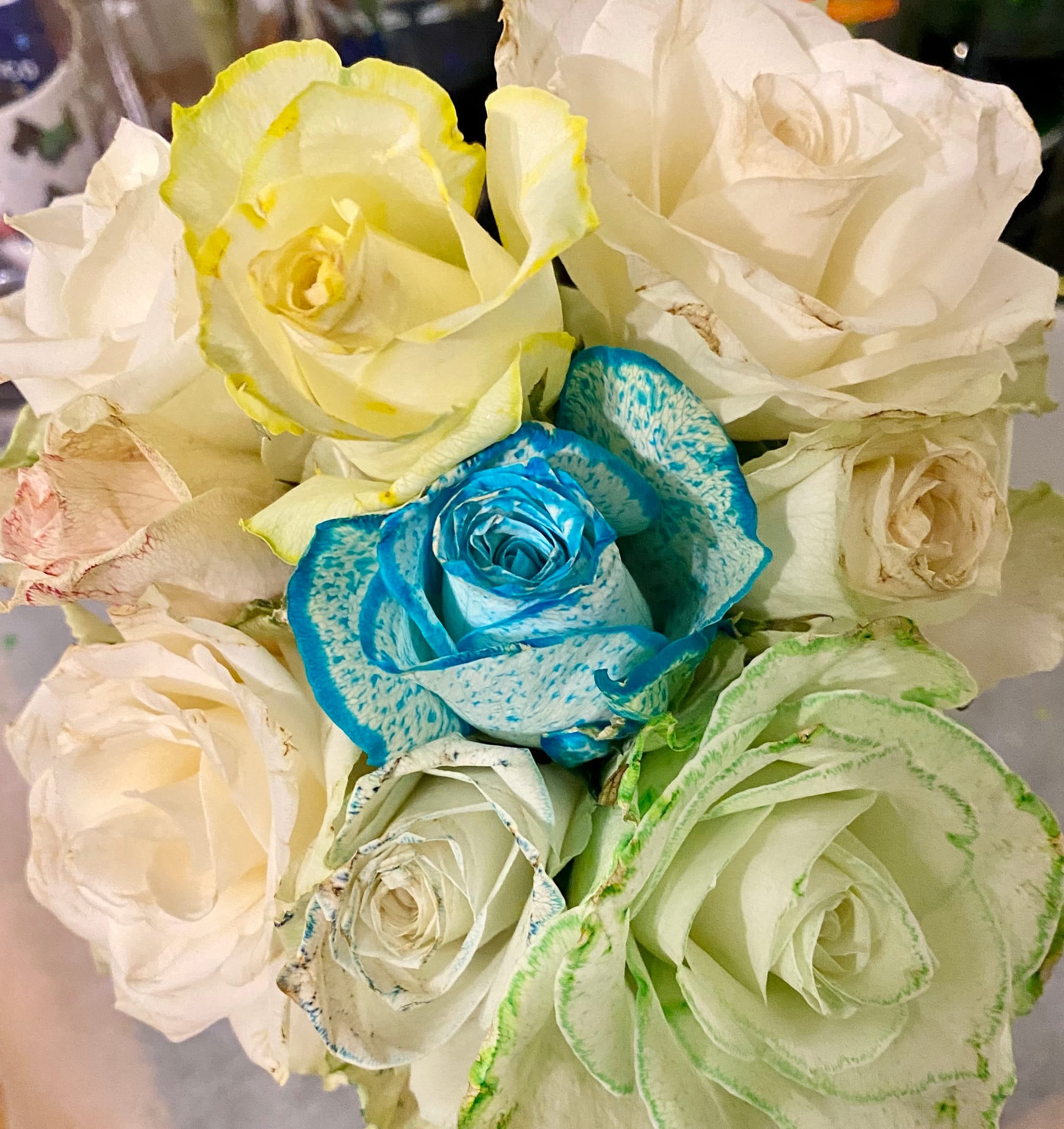Colourful bouquet

In this experiment we are watching plants transport water and nutrients.
Like us, plants need to transport nutrients and water around their bodies. To do this they use a network of tubes (vessels) called a vascular system. Water is transported from the roots to the shoots in xylem vessels. These are made up of hollow xylem cells that have reinforced, thick cell walls. To transport water up the plant against gravity, plants rely on a process called transpiration. Transpiration takes advantage of the fact that water molecules are cohesive (they stick together). Dry air outside the plant causes water to evaporate from the plant via pores called stomata. The cohesion between water molecules causes more water to be drawn out of the xylem to replace the molecules that evaporate. This pulls more water molecules up the xylem vessels against gravity. The rate of transpiration is influenced by how dry the outside air is compared to inside the leaf (water potential differences) and how many stomata are open.
When you put the cut flowers in the dye, transpiration causes the water and dye molecules to be draw up through the xylem vessels to the petals where water is evaporating. The dye molecules don’t evaporate and are trapped in the cells and this turns the petals a different colour.
See our twitter live feed on the experiment
Let’s watch together what happens with #white #roses in #coloured water! Start: today, 29th April at 2pm. Updates from @V_Erastova’s kitchen to follow! #sciencefromhome #homeschooling #STEM
— Scientist Next Door (@Scientist_ND) April 29, 2020pic.twitter.com/z0z9VywuAt